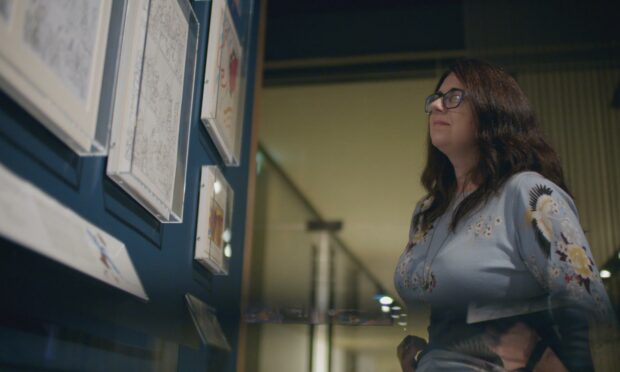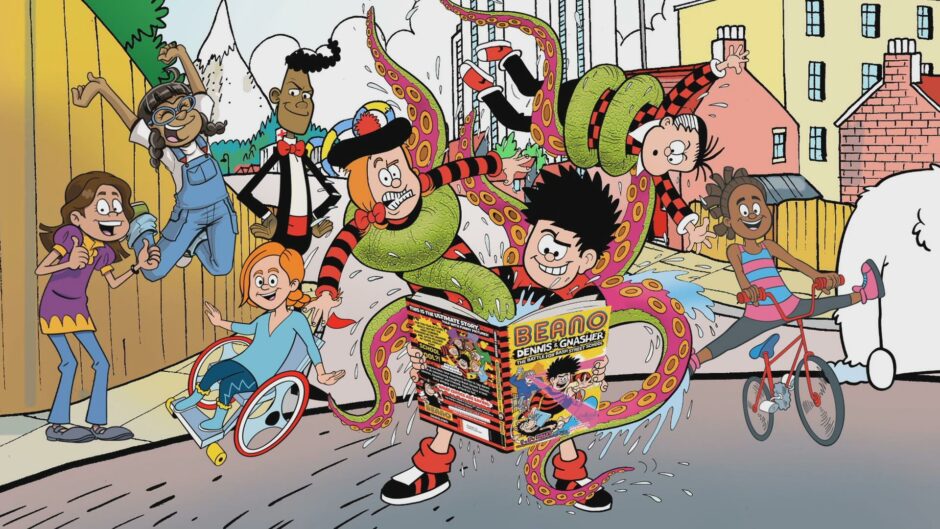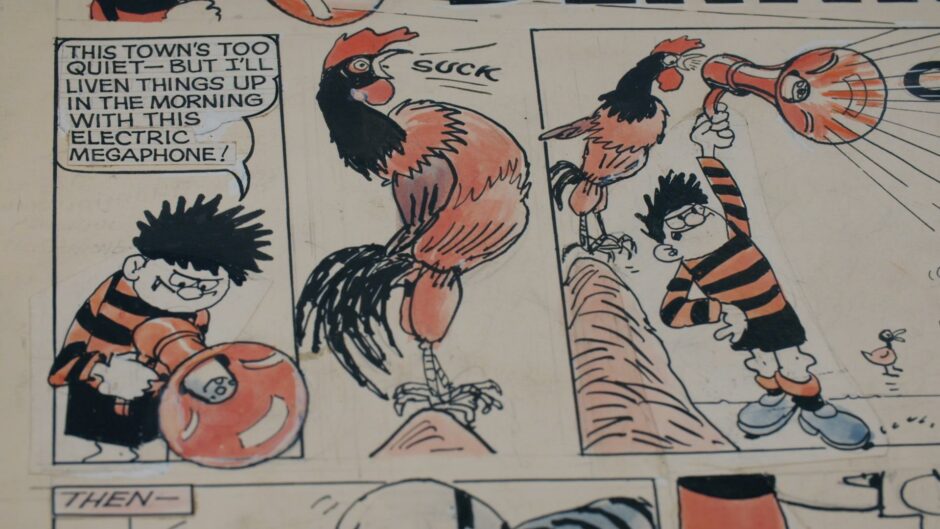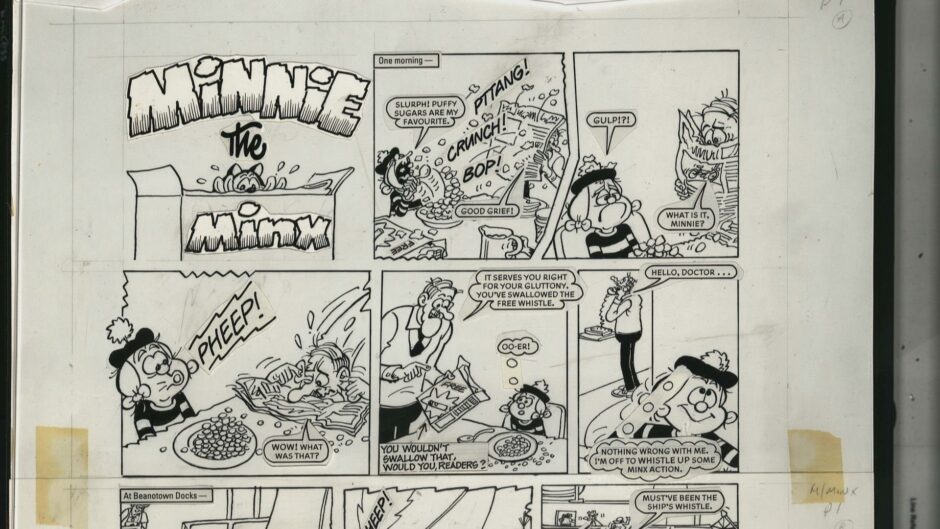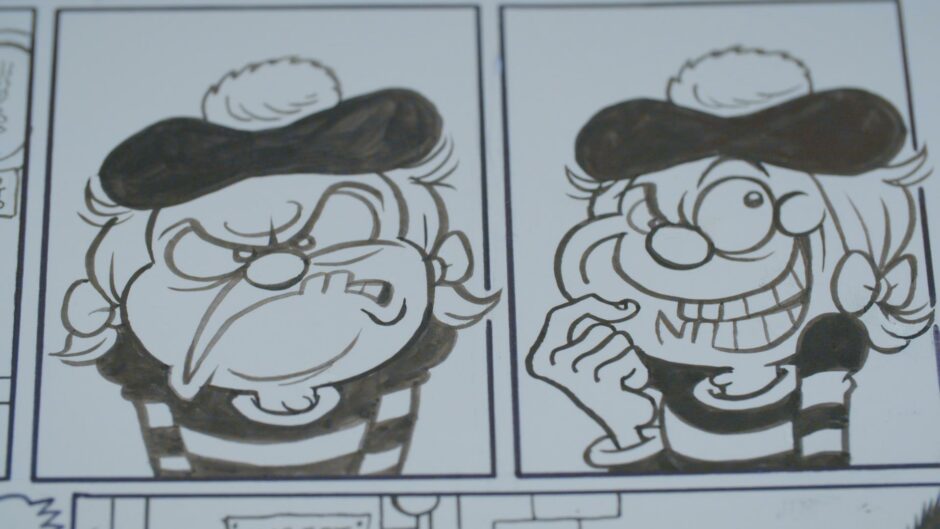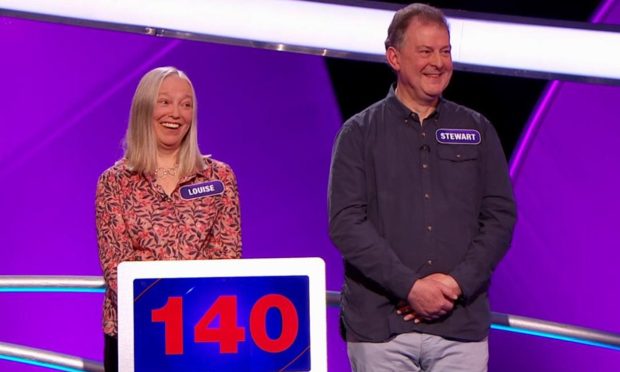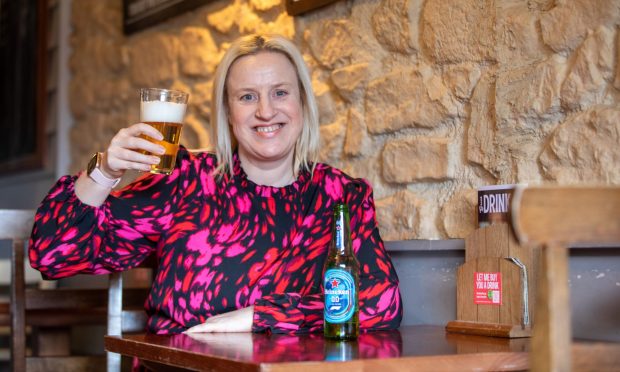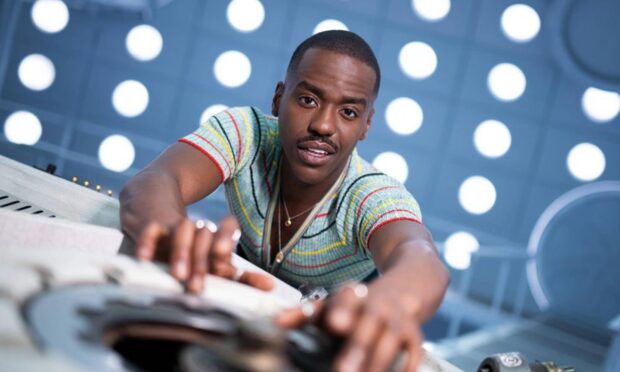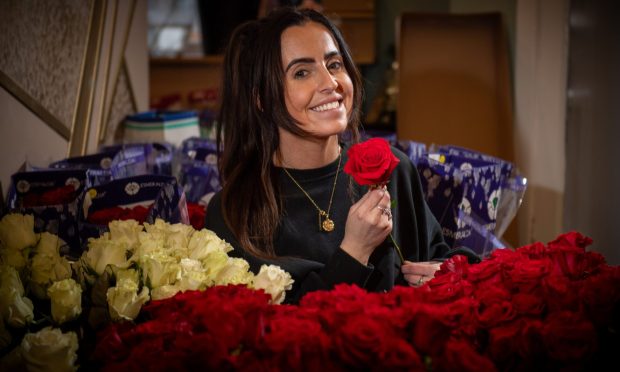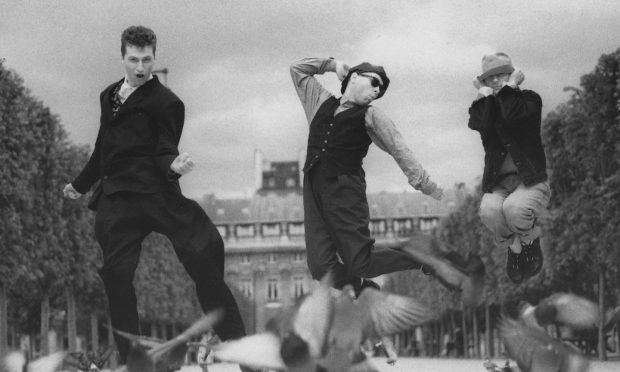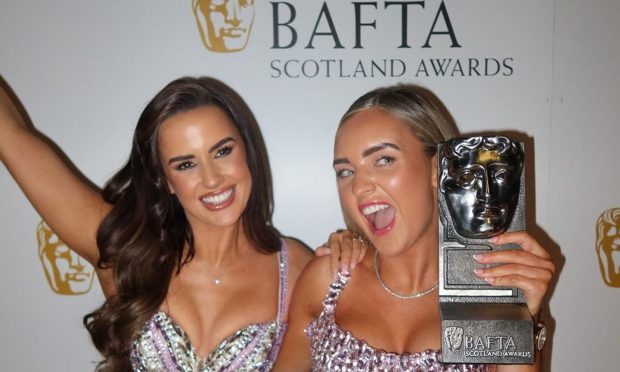Popular TV show Secrets of the Museum is set to go behind the scenes of V&A Dundee tonight.
In series one and two the show revealed the hidden histories behind design treasures tucked away in the V&A’s vast collection in London, uncovering many object stories from the conservation of Victorian toy Pumpie the Elephant to the restoration of an iconic 1960s Mary Quant mini-dress.
The latest series, which began on April 7, takes a closer look at V&A Dundee when it airs at 8pm on BBC Two tonight (April 13).
Throughout 2021, cameras followed the museum’s curators, technicians and the specialists who work hard to capture the unseen work that goes on when caring for museum objects and preparing for new exhibitions.
Viewers will see the preparations undertaken by curator Meredith More to ensure Minnie the Minx’s first-time appearance in the V&A Dundee’s Scottish Design Galleries was a success.
She worked in partnership with Minnie’s present-day illustrator Laura Howell – Beano’s first female illustrator – who provided a fascinating insight into this comic icon.
More object and exhibition stories from V&A Dundee feature later in the series, along with spectacular sweeping drone shots of Dundee’s enticing waterfront and Kengo Kuma’s extraordinary architecture.
After a few years of restricted travelling, it’s hoped this beautifully shot documentary series produced by Blast! Films will inspire people to plan trips to visit all the V&A museums featured across six episodes – including Scotland’s sunniest city, Dundee!
We asked V&A Dundee curator Meredith More a few questions about Minnie the Minx…
Q. Why did you need to replace the Dennis the Menace artwork with Minnie the Minx?
A. We often have to change objects in the galleries for conservation reasons, to ensure they are given the best care. The Dennis the Menace artwork we had on display was particularly sensitive to light because of the red ink that was used, so it was time for it to go back to the DC Thomson Archive, where it can be stored in the dark. This will prevent fading and ensure it can be enjoyed by future generations. It was sad to see this artwork go, but it was also an exciting opportunity to bring a new focus to the display, as there are countless Beano design stories to explore.
Q. What appeals to you about Minnie?
A. Minnie the Minx is a character that defies traditional gender stereotypes, and it’s amazing to think that she’s been pushing these boundaries since the 1950s. When I found out that Minnie was currently drawn by the Beano’s first female artist Laura Howell, it seemed like the perfect opportunity to represent a hugely talented designer, who just like Minnie, is disrupting a male-dominated comics industry.
Q. How did you pick which Minnie strips to show?
A. I worked closely with the archivist at DC Thomson to select which historic Minnie artwork to show. We looked at various designers that had drawn Minnie in the past, but eventually settled on an early strip by Leo Baxendale (the creator of Minnie). This was because Laura Howell told me that she and all other artists at the Beano are still profoundly influenced by his style. With Laura’s works, I wanted to reveal how her ideas for Minnie strips develop from an initial composition into a final design, so we decided to show a rough pencil outline along with a more worked-up pen drawing.
And we also chatted to Beano illustrator Laura Howell
Q. What appeals to you about Minnie?
A. In terms of her character, she’s absolutely comfortable and confident being herself, even when that self sometimes isn’t what other people would like it to be. She’s not afraid to push back against rules and expectations, but she also has a strong moral core and will always stand up for underdogs or ferlessly take on bullies. As an artist, I love her physical energy and her expressive face – I grew up reading Jim Petrie’s Minnie strips, which to me are unrivalled in their sheer manicness.
Q. How does it feel to have your Minnie the Minx artwork on the walls of V&A Dundee?
A. Incredible. As a comic artist you never expect your work to be hung on the wall of a museum, and being alive to see it is a real bonus!
Q. How did you pick which Minnie strips to show?
A. The story’s a neat summary of Minnie’s character traits – she starts off doing her own thing, enjoying a game of football, but falls foul of the snobby, scheming girl next door, who blackmails her into being her maid. Naturally Minnie can’t tolerate being forced to wear a frilly dress and take orders, so she uses her wits to turn the situation round and make sure Susan gets her comeuppance. The raw artwork has no speech balloons, so it’s also important to have a strip that people can readily understand without dialogue – I think there’s enough visual action in this one to get the story across.
Q. Anything else you’d like to add?
A. Never be without a Beano!
Information
- Minnie the Minx has never accepted any limits and thrives on doing things her own way. Sure of who she is, if you asked her, she’d tell you she’s tougher than anyone else.
- When Minnie first crashed onto the pages of Beano in December 1953, the comic writers created her to be just as tough as the boys, inherently measuring herself against them and wanting to be like them. She kicked back against pre-war societal norms and this kick back continued right up until the 90s, as she was continually frustrated by society’s expectation of what a girl ought to be like.
- Now society has finally caught up with Minnie when it comes to gender, Minnie’s taking on all stereotypes. She doesn’t agree that other people know what’s best for her, she knows herself and is ready to challenge anything she doesn’t agree with.
—
